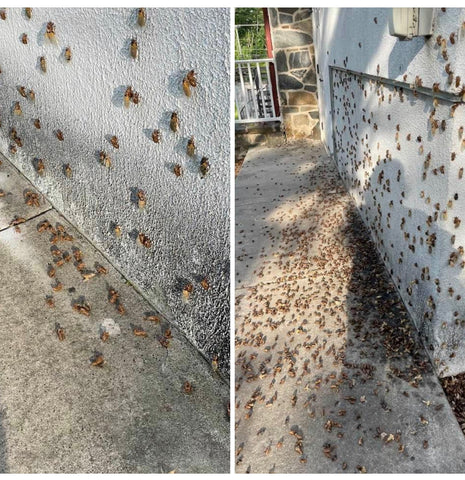Periodic Cicadas – The Rise of Brood X
The Mill employees are receiving a fair number of questions and concerns surrounding the expected swarms of cicadas. In an effort to list good resources for those with questions, my research provided some eye-opening insights. The first is that there is a technical term for the apprehension I experience when I think of swarms of cicadas – Entomophobia. While the periodic cicada may seem to be reminiscent of biblical plagues of locusts, and were actually first documented as swarms of locusts by entomologists over 300 years ago, they are not classified as a locust and certainly do not cause the damage to flora that locusts do. Learning about the life cycle and what to expect can help reduce the apprehension. Below are some key points and questions that we have been asked as well as some good resources to learn more from the University of MD. There is a good time lapse video link as well.
What is “Brood X” and why is it called that?
Brood X (Brood 10) is just 1 of 15 different periodical cicada broods known as the Great eastern brood. They are of the genus Magicicada. Brood X has a 17-year cycle and consists of 3 species. It can be seen in 15 eastern states and D.C. Brood X is the most concentrated and largest brood of any of the 17-year cicadas. This is the year of emergence (2021) and between mid-May and late July, they will complete a life cycle and start a new one in a period of about 6 weeks.
Will they harm my trees or plants?
Cicadas cause little damage to mature plants. Most of the damage is to young trees or shrubs with tender branches when females lay their eggs. This can cause twig die-off or flagging, however, there is not permanent damage. A suggestion is to delay planting trees or shrubs until the end of summer and to cover young woody plants with a netting like cheesecloth if needed. Cicadas do not consume the leaves of plants like locusts will. The year prior to emergence, tree growth may decline due to growing nymphs migrating up from their normal depths between 10 ft and 30 ft to feed on deciduous tree roots before emerging. However, the year following emergence, there is a positive benefit to the forest floor from decomposing carcasses providing nutrients and allowing a rebound of tree growth.
What are some other problems or benefits of cicadas?
Moles may be more abundant the year prior to emerging as they feed on migrating nymphs. But moles suffer the following year as their food supply is reduced. The egg laying activity of female cicadas may also affect mast crops (nuts, acorns) which reduces food for squirrels. It is noted that Eastern gray squirrel populations often decline after a cicada cycle. However, squirrels, birds, chickens, reptiles, cats, dogs and other mammals will feed on cicadas. Wild turkey populations thrive during the cicada cycles.
As of 5/21, I have only seen 1 cicada shell in my backyard on the PA/MD border, however, I am seeing holes in my wooded yard and have noticed a significant drop in birds eating from the feeders. Even the squirrels have stopped visiting the full bird feeders. It’s a good sign they aren’t hungry, so hopefully they are feeding on cicadas and Entomophobia will remain in my head and not visible from my deck!

photo from Belcamp, MD
Here are more resources:
UMD Cicada Crew - https://cicadacrewumd.weebly.com/
Return of the Cicadas video - https://vimeo.com/66688653

























